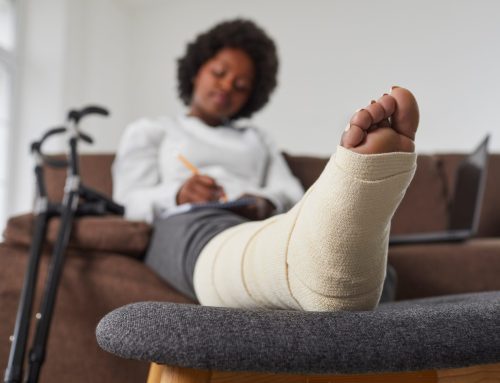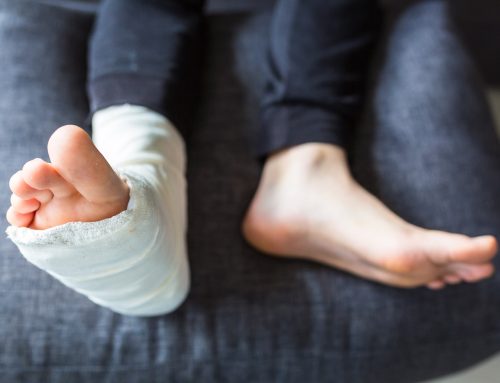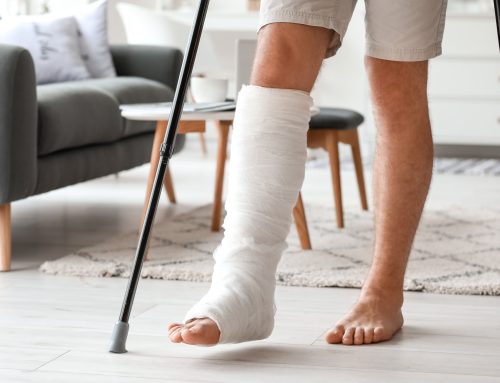At least 1 in 3 women and 1 in 5 men are expected to suffer from an osteoporotic fracture during their lifetime. With over 2 million Canadians affected by osteoporosis, you or someone in your family could be at risk. 80% of all fractures for those over the age of 50 can look to osteoporosis as the culprit. However, you can take steps to prevent yourself from being looped into the alarming statistic.
Strength training and resistance exercise are proven to maintain, and in some cases, increase bone health as you age. Read on to learn about the importance of bone health and the best strength training and resistance exercises you can adapt for preventative care.

The Risks of a Sedentary Lifestyle on Bone Health
As you age, it’s part of the natural cycle to decline in bone strength. For both men and women, this decline typically happens around the mid-30s. With a combination of poor nutrition habits and less activity, adults over 40 can begin to see a decrease of 1% per year and up to 2-3% per year for women approaching menopause.
Osteoporotic hip fractures have more hospital bed days per year than Canadians suffering from a stroke, diabetes, or heart attack. Over 1 in 4 patients who suffer from a hip fracture have been reported to die within one year. Men have an increased risk of death by 9%.
The importance of strength training and resistance exercise on bone health is crucial for the aging population to protect their well-being. The sooner you start these healthy bone health habits, the more benefits you’ll see.
Strength Training and Resistance Exercises for Bone Health
Strength training and resistance exercise over time has been proven to help prevent bone loss and can even create new bone. Maintaining strong muscles with weight training helps cultivate your balance and coordination, which is essential for avoiding falls and osteoporosis-related fractures.
However, not every exercise optimizes for bone health. These are our top strength training and resistance exercises for bone health.
Aerobic Exercise for Bone Health
Casual aerobic exercise and walking haven’t shown evidence of increasing bone health on the lumbar spine or femoral neck. However, speed, duration, and how often you walk per week can significantly affect your results.
Studies have shown that brisk walking or jogging habits can positively affect the BMD (bone mineral density) in both the hip and the spine, especially in menopausal women. One key factor is that walking or jogging must be rigorous enough to reach a higher level of mechanical stress on the body to stimulate bone mass.
Keep up with a walking or jogging routine consistently for more than six months to prevent BMD loss and increase your bone health.
Strength Training for Upper and Lower Limbs
Strength training is not only beneficial to bone health but will benefit you in several ways.
- Strength training keeps bones strong by working through the added weight-bearing stress.
- Strength training can help manage weight and improve your metabolism, giving healthy weight loss solutions that won’t negatively affect bone mass.
- Strength training has been beneficial for preventing injuries. The muscle built will help reduce the risks of falls as you age.
- Keeping a regular routine of strength training exercises can manage the symptoms or pain related to chronic conditions that may be bothering you. This includes any back pain, arthritis, obesity, heart disease, and more.
Research has shown that strength training must be done consistently and correctly to be effective in increasing bone health. High load exercises with low repetitions are recommended. However, if you’re already at an increased risk for fracture, you should speak with your doctor about the best method of exercise.
The top strength training exercises for bone health are listed below.
- Weighted squats.
- Leg press.
- Hip extension and adduction.
- Stair climbing with a weighted vest.
- Seated rowing.
- Wrist curls and tricep extensions.
- Bench press.
Resistance Exercise for Bone Health
Swimming, dancing, cycling, and Tai-Chi can help you make tremendous strides in protecting your bone health. These exercises all come down to a mix of balance with muscle strengthening components.
These exercises emphasize both power and balance together to enhance your stability. This boosts confidence, helps you stay independent as you age, and eliminates the risks of fractures by reducing the number of falls. The more balance you have, the less likely you’ll succumb to a fracture-causing fall.
Exercise should always be tailored to your ability; there’s no one size fits all. Increasing your exercise weight should always be done safely, with supervision. The best course of action for improving, or preventing bone loss, is to combine your exercise routine with strength, balance, and resistance-focused work.
Have you been avoiding your exercise routine for months due to the pain of a delayed fracture? If you have 20 minutes per day, you can accelerate your healing journey with Fracture Healing and a Melmak bone growth stimulator. With the independent Canadian in mind, the LIPUS devices were designed for self-treatment in the comfort of your own home. Contact us to get yours today.
What is your favourite exercise we mentioned in this article? Have you ever had to put a pause on your exercise routine due to a fracture? Share your experience and tips with our readers on the best resistance and strength training exercise for bone health.





